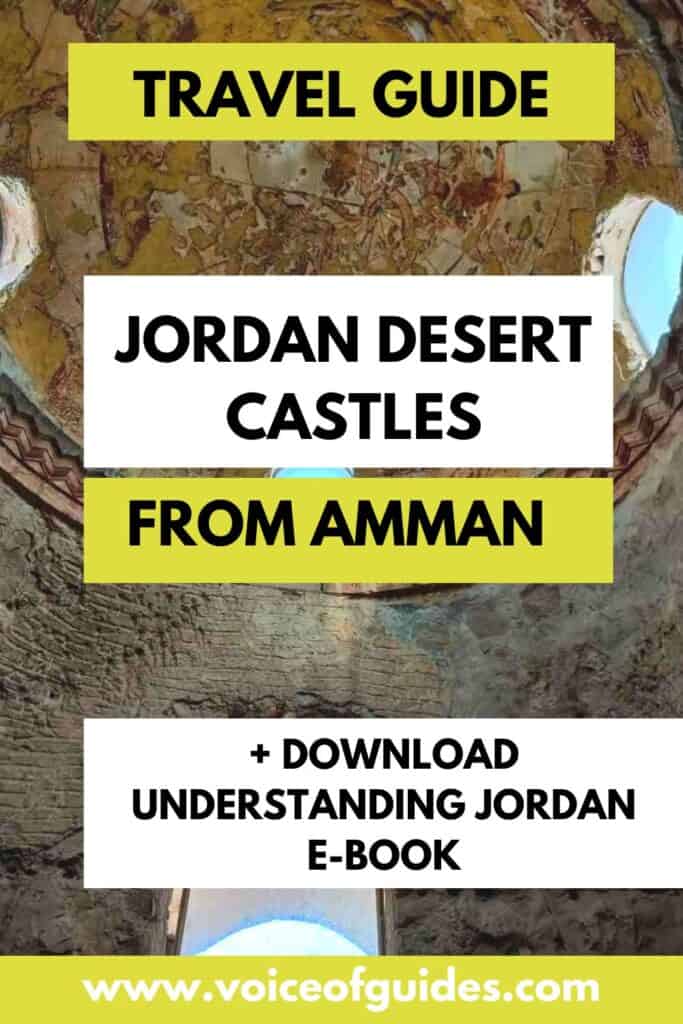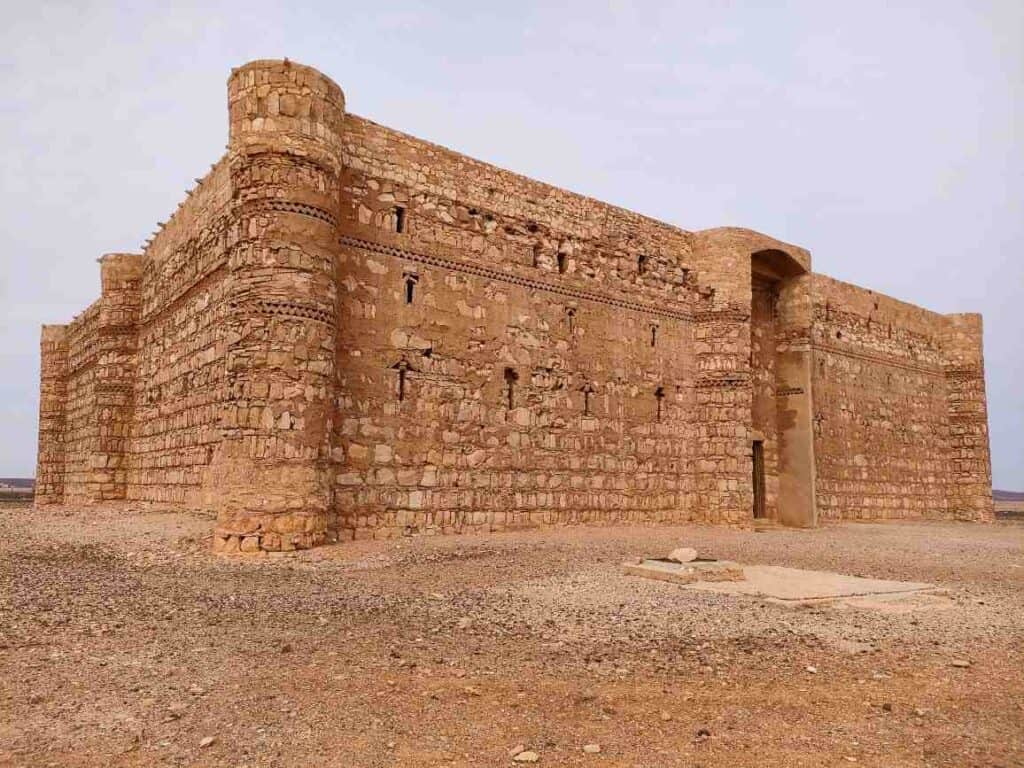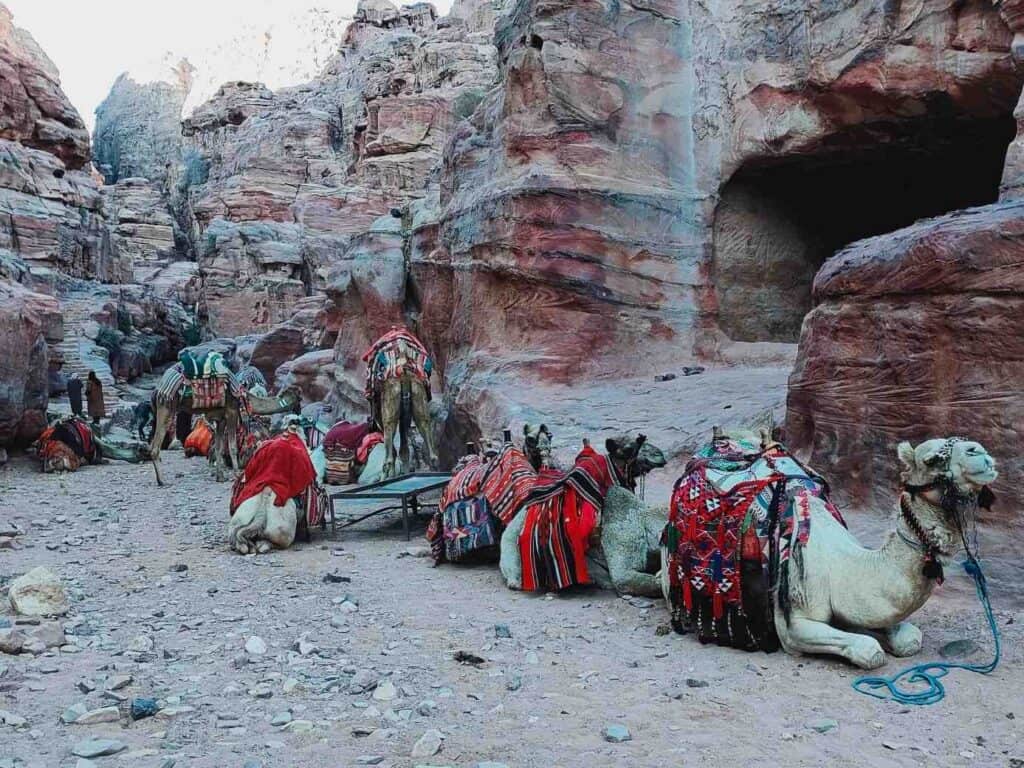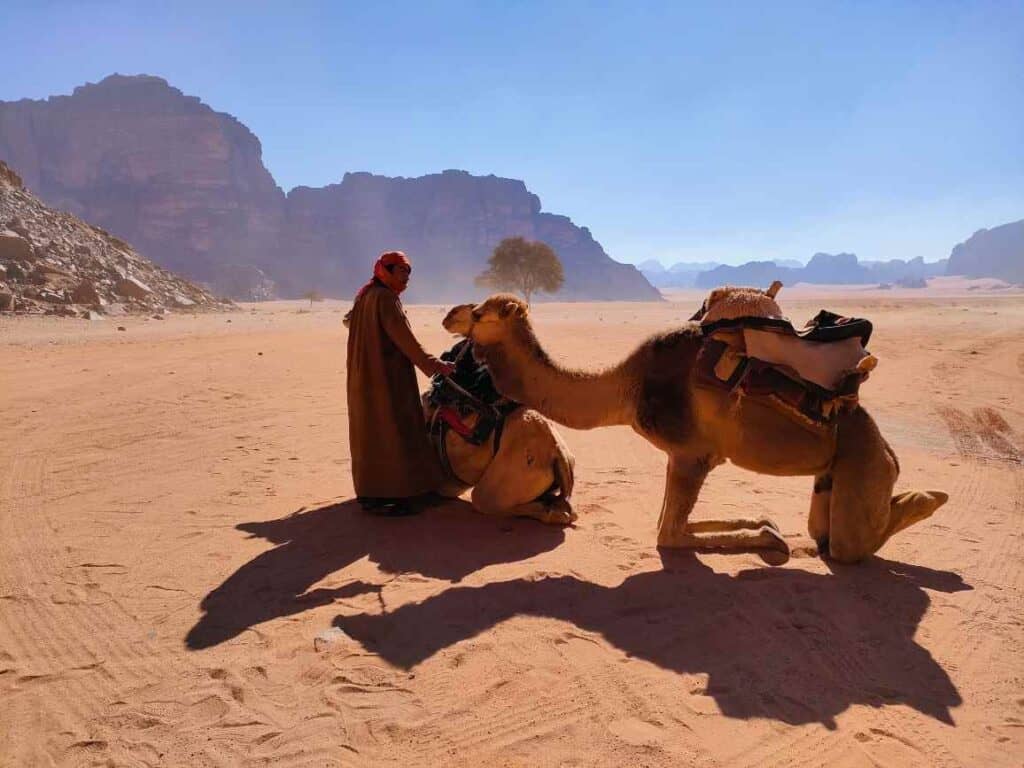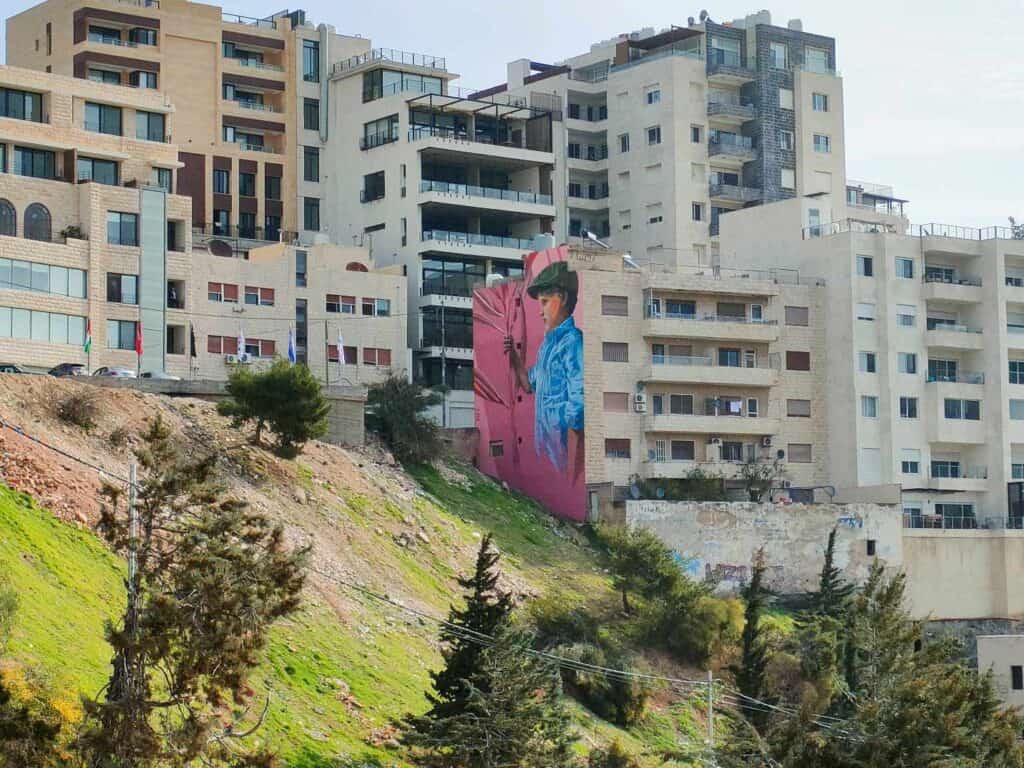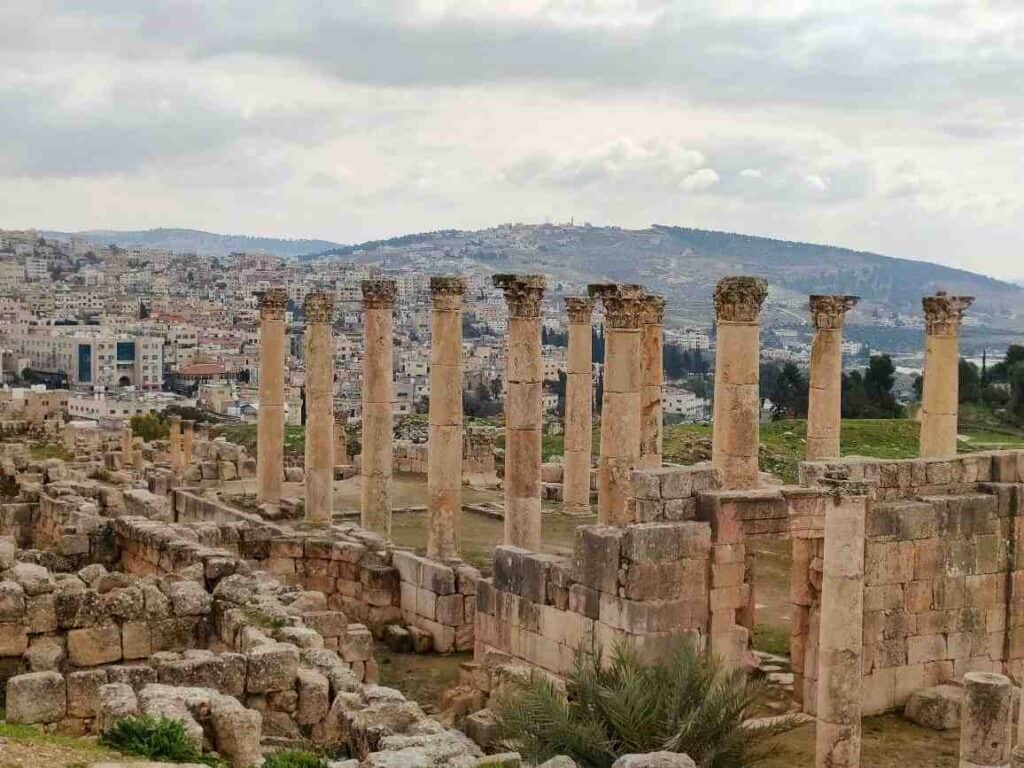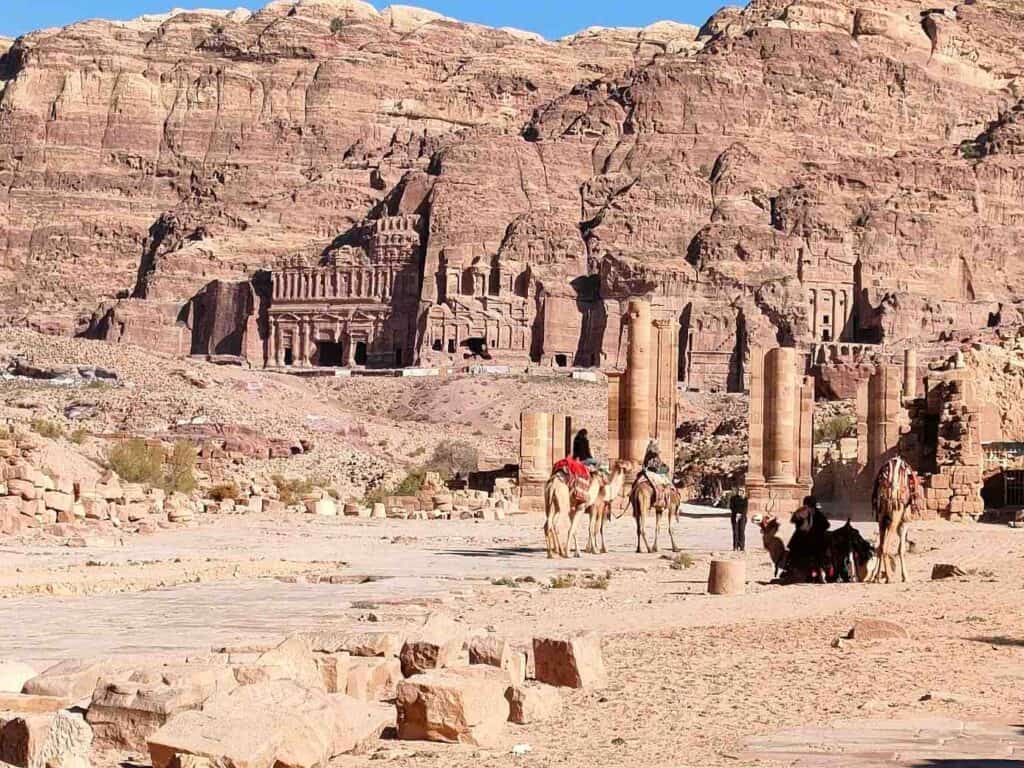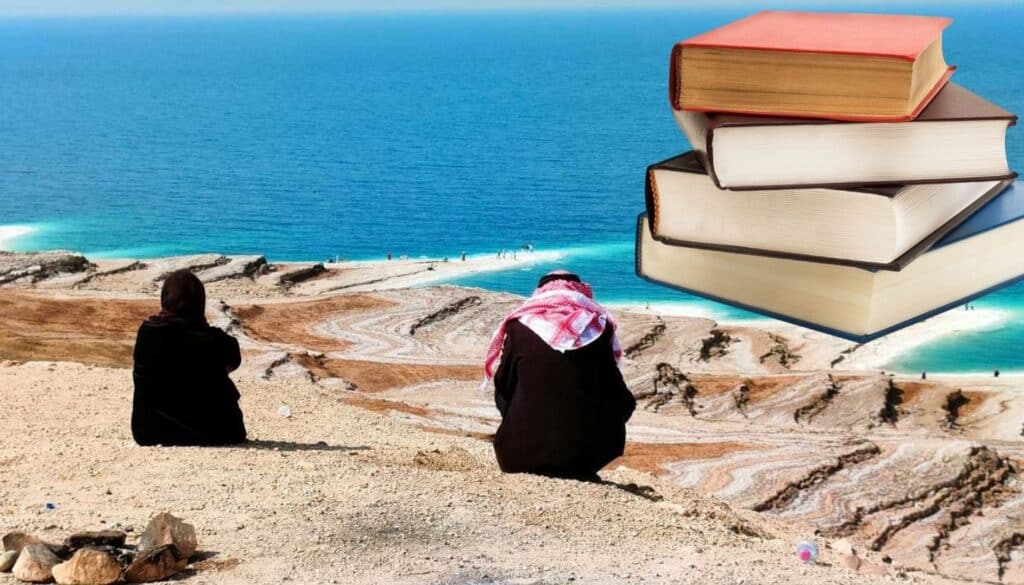This article may contain affiliate / compensated links. For full information, please see our disclaimer here.
Most tourists do not visit the Jordan desert castles, although they make an excellent easy day trip from Amman. The castles are located in the deserted northeastern area of the country. This is also the way to go to Iraq. If you have at least 10 days in Jordan, I recommend including it in your itinerary. In this travel guide, I share my experience and all the information you need to know about how to complete the Jordan desert castle loop.
How to visit the desert castles?
There is no public transport to the desert castles. You have two options:
– You can book a desert castle tour from Amman
Opening hours of the desert castles in Jordan
During winter (November – April): 8 am- 4 pm
During summer (May – October): 8 am- 6 pm
Entrance fee to the desert castles
Included in the Jordan Pass, or 3 JOD each
Here you find a 5, 7 and 10 days Jordan travel itinerary to make the most of your trip
Things to know about the Jordan desert castles to the east of Amman
Unlike Wadi Rum, with its unique rock formations, the flat basalt desert area east of Amman (“badia”) that stretches from Iraq to Saudi Arabia is usually not on travelers’ bucket lists. Apart from Azraq, there are no significant cities in this region. Currently, the Trans-Arabian oil pipeline and Highway 10 to Iraq pass through it. However, the seemingly uninteresting area was crucial in the past. Pilgrimage and caravan routes connecting Baghdad with Mecca had crossed the countryside since ancient times. The eastern desert is made up of a series of early Islamic hunting lodges, forts, caravanserais, holiday palaces and other ruins, which are called somewhat inaccurately the Jordan desert castles.
The Jordan desert loop consists of 4 desert fortresses: Qasr al Hallabat, Qasr al-Azraq, Qusayr Amra, and Qasr Kharana.
Most of them were built by the Damascus-based Umayyad caliphs (661-750) in the first decades of Islam. Al-Azraq and Al-Hallabat were initially Roman forts that have been converted into Islamic castles. The castle interiors are covered with rich mosaic-fresco, stucco-marble, painted stucco decoration, and other fine examples of Islamic art.
Read more about how to spend one day in Amman
There are several different theories about their functions. The early Arab rulers were Bedouin chieftains who built pleasant holiday palaces surrounded by orchards and gardens because they loved the desert. The caliphs could only spend a few weeks here during the year, with falconry, hunting, and horse racing being their main activities. In the evening, they held great parties, where wine flowed abundantly, men were pampered by beautiful women, and the court poets performed their most beautiful poems. During the year, the castles served as resting places for pilgrims on their way to Mecca and travelers on the caravan routes connecting Syria, Arabia, and Iraq.
How to plan your trip to Jordan?
Flights: find the best flight deals on Skyscanner
Rent a car: Check Discover Cars‘ deals for driving around in Jordan (the best way to discover the country)
Insurance: Safetywing is a cheap insurance that covers all medical issues, including COVID-related ones. This is what I use every time.
Hotel/Hostel: Booking.com
Local tours and guides in Jordan: Toursbylocals, GetYourGuide and Viator offer several customized tours to Petra
Others say that this is where the caliphs could ignore the strict Islamic regulations, such as the ban on alcohol and the depiction of living creatures. They might have fled from the epidemics spreading in the big cities or maintained contact with the Bedouin tribes, whose support was essential to sustain the conquests.
The best is to visit the famous desert castles in the following logical order.
1. Qasr Kharanah – one of the oldest Islamic fortresses (75 km from Amman)
It looks like a massive rectangular fort from the outside, a caravanserai, but historians debate its function as no caravan routes were running nearby. According to the latest assumptions, it was the meeting place of the Umayyad caliphs and the local Bedouin tribes. The inscriptions say it dates back to 710, which means it is among the oldest existing Islamic fortresses.
Approximately 60 rooms are accessible from the inner courtyard of the castle. The long rooms on either side of the arched main entrance were used as stables, and a rainwater collection cistern was in the middle of the yard. Stairs lead up to the first floor, where the rooms are decorated with stucco medallions.
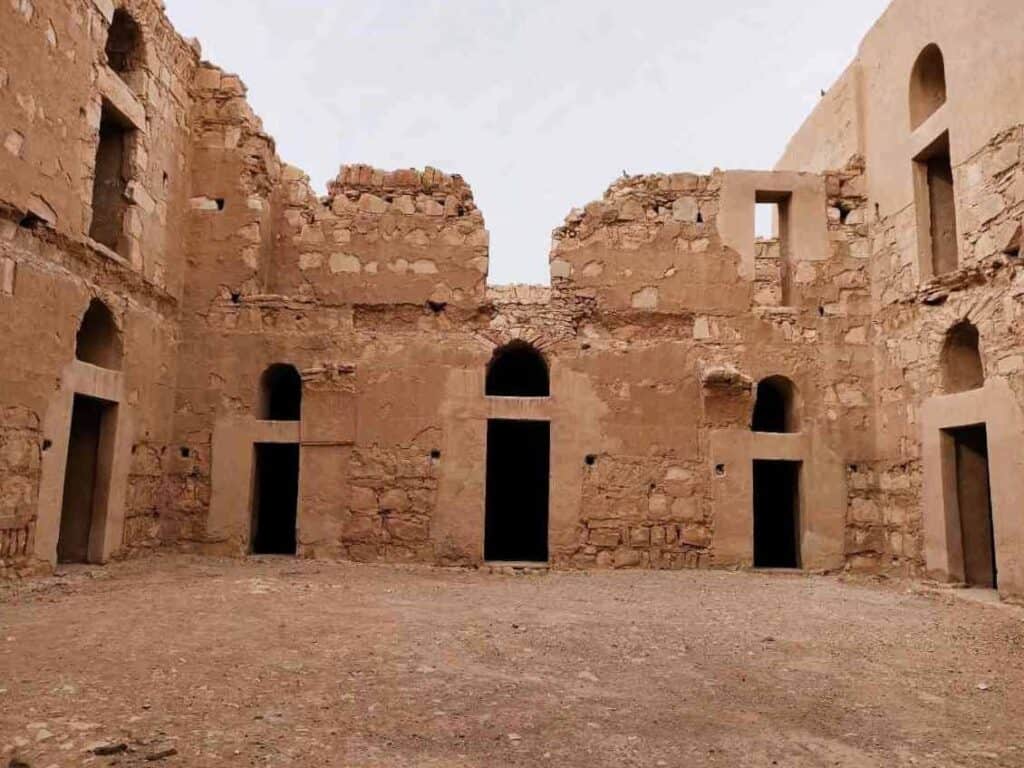
2. Quyasr Amra – UNESCO World Heritage (16 km from Qasr Kharranah)
This is the most beautiful of all the Umayyad-era desert buildings and is famous for its 8th-century frescoes. It was once part of a larger building complex consisting of a caravanserai, a bath, and a hunting lodge.
The bath was built around 711 under the Umayyad ruler Walid I, who also constructed the prestigious Damascus mosque.
The reception hall decorated with frescoes, is where they held the festive events and banquets. The frescos have different topics:
– Women figures, some with uncovered breasts, holding bowls full of food or money, dressed in fine clothes.
– Fighting wrestlers and bathing women proved that bikinis were already worn in the 8th century. Other frescos depict the Umayyad caliph in the company of other rulers, and a woman lying on a couch being fanned by two servants.
– An elaborate hunting scene with dogs chasing a herd of wild donkeys toward the trap.
If you look carefully, you notice that the fresco topics, such as the naked dancers, hunters, and musicians, are all considered “haram” in Islam, which prohibits the depiction of human and animal figures. So why were they prepared, then?
Some Islamic scholars blame a pagan Arab tribe that ruled the region during the Roman era, and others make the sinful caliphs responsible who turned away from the true faith. According to others, Amra was simply a vacation home for men who wanted to indulge in entertainment against the court’s strictness.
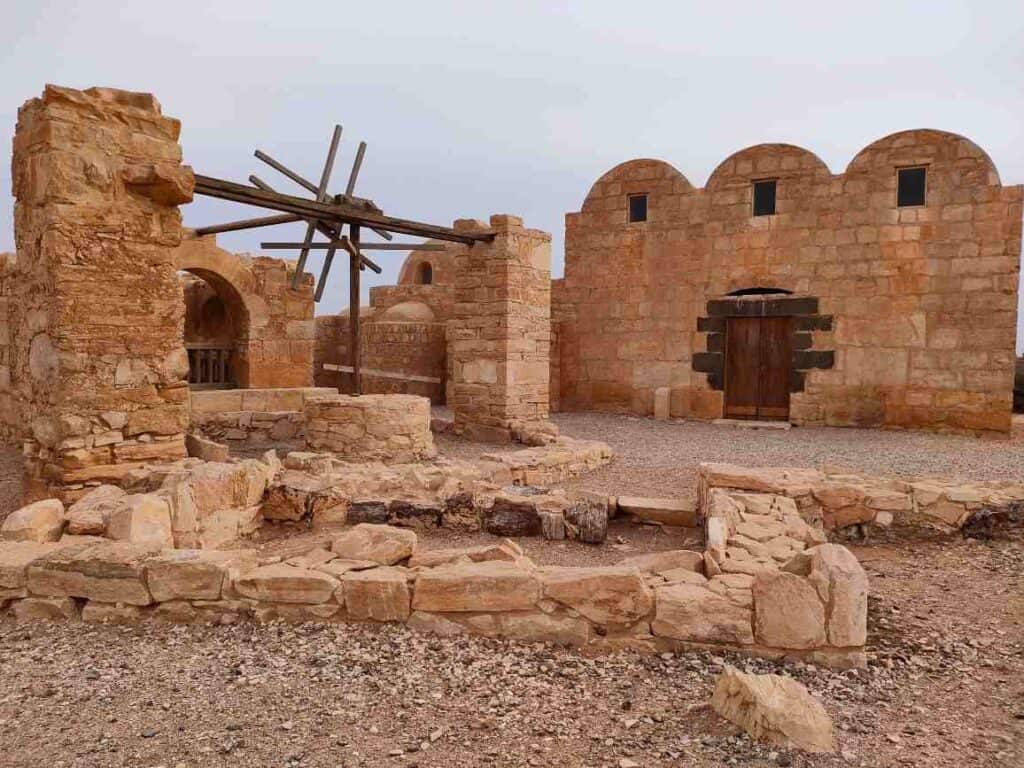
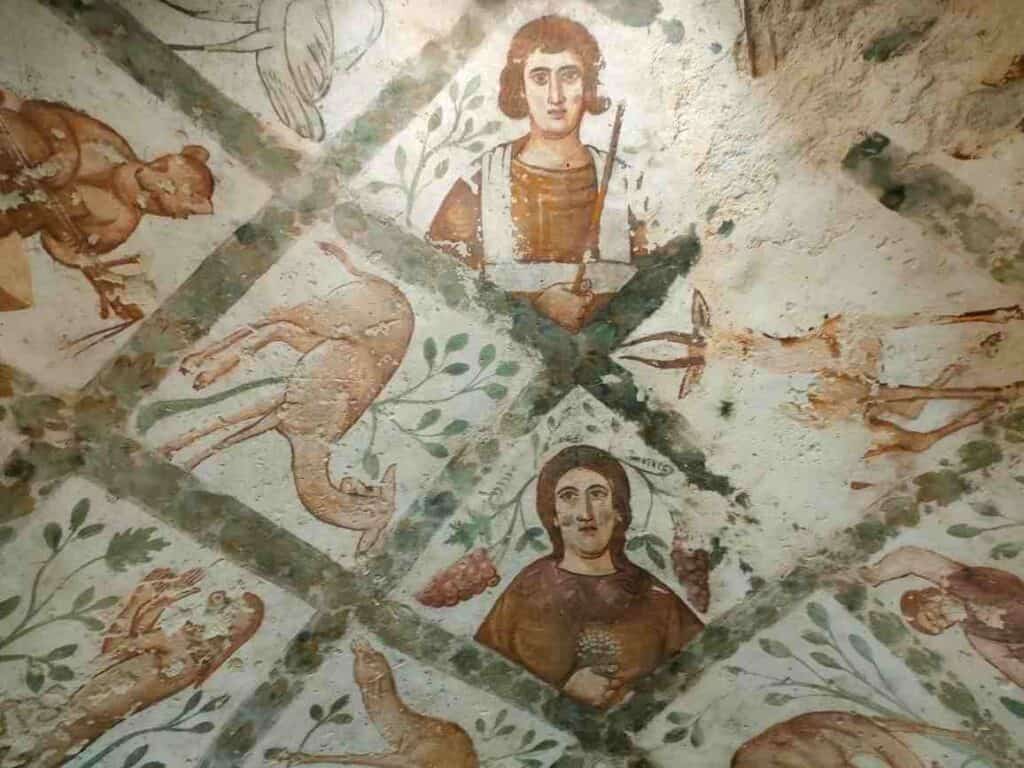
3. Qasr al-Azraq (30 km from Quyasr Amra)
It is the farthest of all the Jordan desert castles, located inside Azraq city. Little is known about its past because only a few excavations have been carried out at the site. Most people know it as the castle of Lawrence of Arabia. The fortress already existed in Roman times, in 300, and it was used as a hunting lodge and a military guard station during the time of the Umayyad Caliph Valid. The Ottoman Turks stationed a permanent garrison here from the 16th century. The leaders of the Arab uprising against the Turks, Lawrence of Arabia and Hussein ibn Ali Sharif, found accommodation in the fortress in the winter of 1917-18. Lawrence lived in the rooms above the south gate, from which one could inspect the fort, filling the gaping holes in the roof with palm fronds and clay. After the 1927 earthquake, a significant part of the building collapsed.
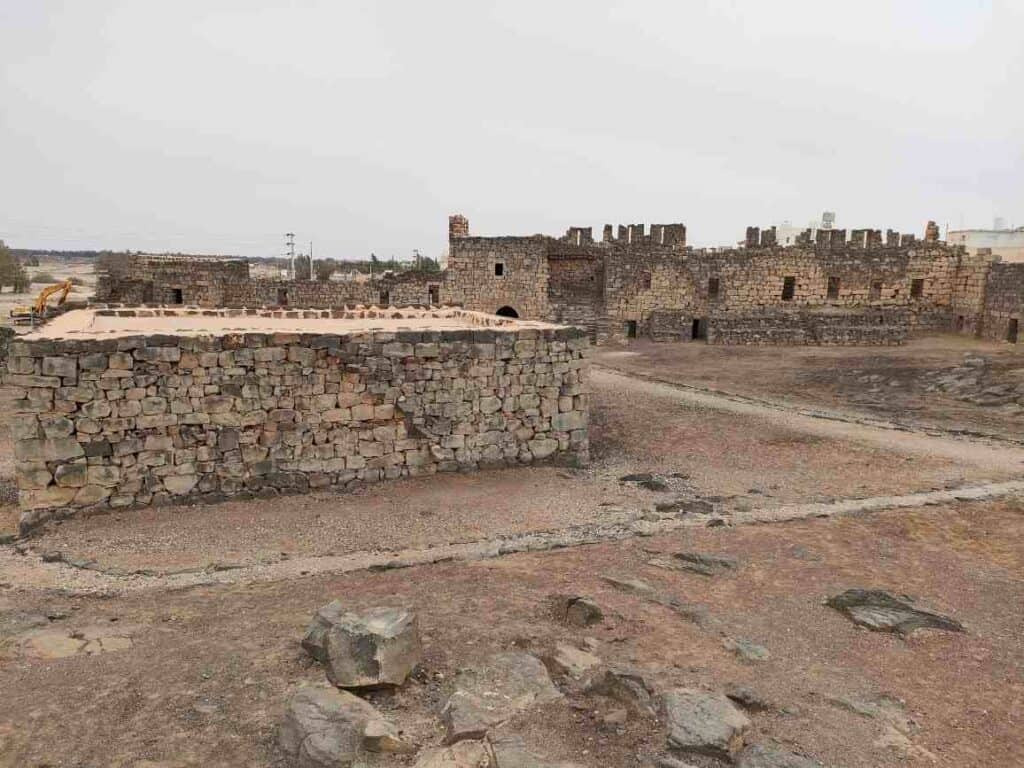
Things to see in the castle of Azraq:
– Remains of a Roman altar from the 3rd century
– the mosque in the middle of the spacious courtyard faces Mecca. The Ayyubids built it in the 13th century on the ruins of a Byzantine church
– in the corner of the yard, stairs lead down to the well, which was full of water even 20 years ago
– the remains of the prison in the corner
– in the north wing, there were a kitchen and a dining room with barely visible remains today
– warehouses and stables
– the tower of the western wall is spectacular. Its door was built from a massive one-piece block of basalt that even Lawrence of Arabia mentioned in his book, The 7 Pillars of Wisdom.
How to plan your trip to Jordan?
Flights: find the best flight deals on Skyscanner
Rent a car: Check Discover Cars‘ deals for driving around in Jordan (the best way to discover the country)
Insurance: Safetywing is a cheap insurance that covers all medical issues, including COVID-related ones. This is what I use every time.
Hotel/Hostel: Booking.com
Local tours and guides in Jordan: Toursbylocals, GetYourGuide and Viator offer several customized tours to Petra
Azraq is the biggest town in the desert with around 14 000 inhabitants and the only place you can find accommodation. It is located at the intersection of the Jerusalem-Baghdad caravan route and the great pilgrimage route to Mecca. It is still a transport hub along the national road that leads to Iraq for 230 km and the south-eastern one to Saudi Arabia.
The Azraq Wetland Reserve is another well-known attraction in the region. However, I would not include it in the program as the Azraq desert oasis, once the most important source of drinking water in the water-poor area, has been the victim of the region’s biggest environmental disaster. The wetland was once where millions of migratory birds stopped on their way between Europe and Africa. But when they started to pump the water to fulfill the needs of Amman’s rapidly growing population in the 1960s, the natural springs dried up, and migratory birds switched locations. The case of Azraq is an example of how modernization destroyed the ecosystem. The government tries to restore the wetlands without significant results. All water buffalos died as well.
Azraq consists of two settlements. Azraq al-Janubi was founded at the beginning of the last century by Chechens fleeing Russian persecution. The other, Azraq ash-Shomali, known for its castle, is the home of the Druze who fled from Syria under French rule in the 1920s.
These three are the most important desert castles in Jordan. If you have less time, visit these three. If you have more time, you can also head to Qasr al-Hallabat.
4. Qasr al Hallabat (60 km from Qasr al-Azraq)
It was originally part of the Roman defense system aimed to protect the eastern frontier of the Roman Empire. The Umayyad caliph demolished the Roman structure to build one of the biggest desert castle complexes. The castle’s two most important parts are the mosque and the bathhouse. The three walls and the mihrab remained intact from the original mosque.
Other day trips from Amman
– Madaba, Mont Nebo, Hammamat Ma’in hot springs
– Petra
The desert castles may not be the highlight of your trip, but if you have at least 10 days in Jordan, you should include it in your itinerary. Visiting some off-the-beaten-track places in Jordan is part of having a better understanding of the country. You can see all the castles comfortably during a relaxed day from Amman.
Other articles about Jordan
The perfect Petra one and two-day itinerary in Petra
Jerash, Ajloun and Umm Qais: a day trip from Amman
Other posts about the Middle East
Lebanon
10-day itinerary to visit Lebanon
How to spend 2-3 days in Beirut
Travel guide to Tripoli, Lebanon
Best books to read about Lebanon
Traveling around Lebanon during the economic crisis
Iran
What you can and cannot do in Iran
45 things you must know before traveling to Iran
The best books to read about Iran
The best 2-week itinerary in Iran (the classical route)
All you need to know about the Iranian currency
The best places to visit in Tehran (museums, palaces, religious sites)
The best things to do in Tehran
Travel guide to Tabriz, North Iran
Travel guide to Mashhad, the holy city of Iran
Best things to do in Lahijan, the city of tea in Iran
Best things to do in Ramsar at the Caspian Sea
Visit Varzaneh desert, Toudeshk, Mesr desert and Garmeh from Isfahan
Iraq
All you need to know before traveling to Iraq
What to visit in Baghdad in 3-4 days
The best books to read about Iraq (constantly updated)
Visiting Lalish, the holy place of Yezidi people
How to visit Babylon and other places around Hillah
Most interesting places to visit in Iraq
Pin it for later!
